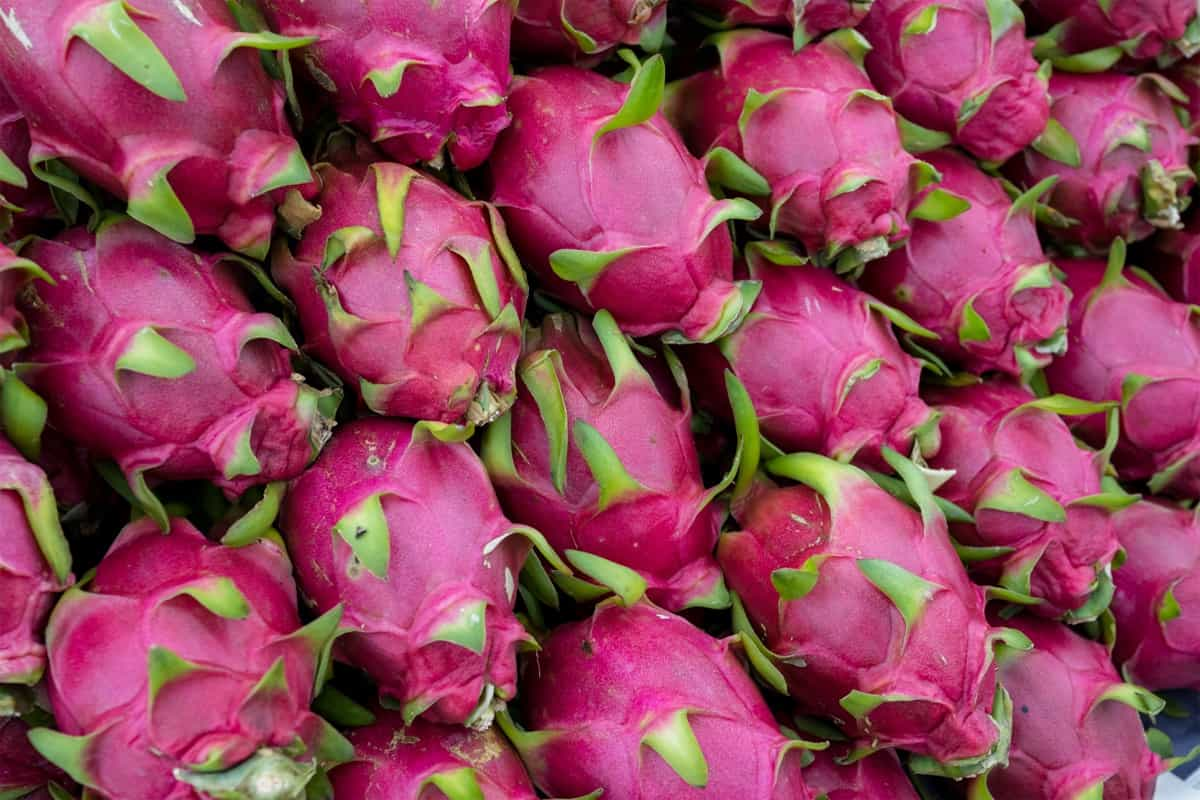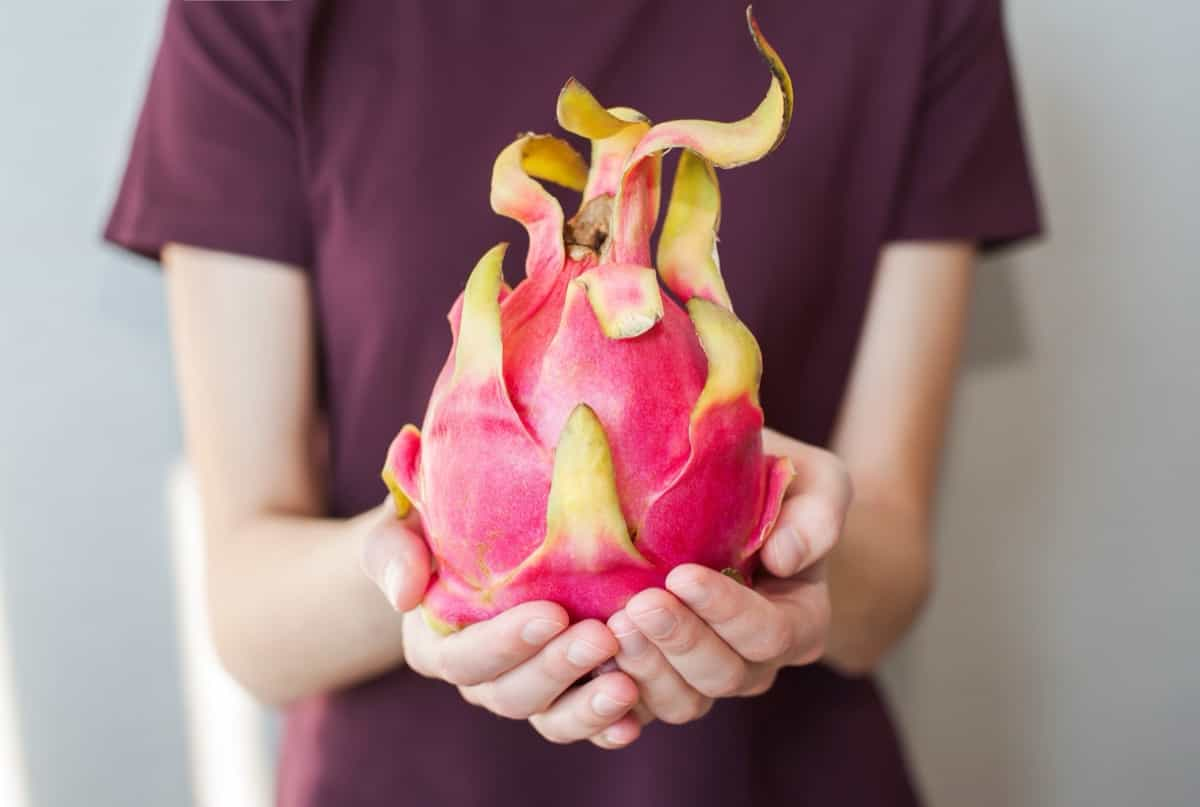Dragon fruit, with its unique appearance, has captured the attention of many fruit enthusiasts worldwide. However, achieving larger-sized Dragon fruits requires a deeper understanding of their growth process and careful consideration of various factors that influence their size. Increasing the size of Dragon fruits in your orchard requires careful fruit size management techniques.

By understanding the growth process and factors affecting fruit size, you can optimize conditions for larger Dragon fruits. By implementing these techniques and avoiding pitfalls in fruit size management, you can enhance the quality and yield of your Dragon fruits.
How to Get Bigger Dragon Fruits
Optimizing Soil Nutrients for Larger Dragon Fruits
To grow bigger and juicier Dragon fruits, it’s essential to optimize the soil nutrients in your orchard. The right balance of nutrients will provide the necessary support for the fruit’s growth and development. You can ensure that your Dragon fruit plants get adequate amounts of nitrogen, phosphorus, potassium, and other essential elements.
One way to enhance soil fertility is by incorporating organic matter into the planting area. This will not only improve nutrient availability but also enhance soil structure and water-holding capacity. In addition to organic matter, consider using slow-release fertilizers specifically formulated for Dragon fruits.
Maximizing Sunlight Exposure for Bigger and Better Dragon Fruits
When it comes to growing Dragon fruits, maximizing sunlight exposure is crucial for achieving bigger and better fruits. These tropical plants grow well in warm climates with plenty of sunshine, so it’s important to ensure they receive adequate light throughout the day. To maximize sunlight exposure, start by selecting a location in your orchard that receives full sun. Ideally, this means a spot that gets at least 6-8 hours of direct sunlight each day.
Avoid planting Dragon fruit trees in shaded areas or near tall buildings or trees that could block the sun’s rays. Another way to optimize sunlight exposure is by properly spacing out your Dragon fruit plants. Give them enough room to spread out their sprawling vines and leaves, ensuring that neighboring plants do not cast shadows on one another. This will allow each plant to absorb as much sunlight as possible.
The Role of Pruning in Increasing Dragon Fruit Size
Pruning plays a crucial role in increasing the size of Dragon fruits in your orchard. By strategically removing certain parts of the plants, you can encourage better fruit development and maximize their overall size. Pruning helps to redirect the plant’s energy towards fruit production. By removing excess branches and foliage, you reduce competition for nutrients and water within the plant.
In case you missed it: How to Grow Dragon Fruit/Pitaya from Cuttings to Harvest: Check How this Guide Helps Beginners

Trimming away dense foliage also ensures that sunlight reaches all parts of the plant evenly, promoting photosynthesis and enhancing fruit size. When it comes to pruning Dragon fruits, it’s important to focus on removing weak or damaged branches as well as any suckers that divert energy away from main stems. Regularly thinning out excessive growth will prevent overcrowding and allow the remaining branches to thrive.
Irrigation Techniques for Larger Dragon Fruits
Irrigation plays a vital role in the development and growth of Dragon fruit plants. Adequate water supply is essential for larger fruit production. It’s important to ensure that your Dragon fruit plants receive regular and consistent watering. A drip irrigation system can be highly effective in providing controlled moisture levels directly to the roots. Additionally, timing is crucial when irrigating Dragon fruit plants. It’s best to water them early in the morning or late in the evening when temperatures are cooler. This allows the plant to absorb water more efficiently without excessive evaporation.
Fertilizer Application for Bigger Dragon Fruits
One crucial aspect of growing bigger Dragon fruits is proper fertilization. By supplying the right nutrients to your plants, you can enhance their growth and increase fruit size. It’s important to understand the nutrient requirements of Dragon fruits. These tropical cacti thrive in well-drained soil that is rich in organic matter. They need a balanced fertilizer with a higher phosphorus content, as this promotes flowering and fruit development.
When applying fertilizer, you should follow the instructions on the packaging carefully. It’s best to use slow-release granular fertilizers or organic options like compost or manure. Apply the fertilizer evenly around each plant, ensuring it doesn’t come into direct contact with the stems or roots. Regularly monitor your plants’ nutrient levels by conducting soil tests. This will help you determine if any deficiencies need to be addressed through additional fertilization.
Dragon Fruit Thinning: When, How, and Why to Thin Fruits for Optimal Growth
Fruit thinning involves removing excess fruits from the plant to promote better growth and development of the remaining ones. This process allows the plant to allocate its energy more effectively, resulting in larger and tastier Dragon fruits. Ideally, you should begin this process when the fruits are still small and green. It’s important not to wait until they become too big or mature because that could hinder their growth potential.
Now, let’s talk about how actually to perform fruit thinning. First, carefully inspect each fruit on your plant and select those that appear damaged or misshapen. These are prime candidates for removal. Next, gently twist or cut off these undesirable fruits using clean pruning shears or scissors. Thinning out your Dragon fruits serves several purposes beyond just improving their size. By reducing overcrowding on the plant, you also enhance air circulation around the remaining fruits while minimizing disease risks.
Monitoring and Controlling Pests and Diseases for Larger Dragon Fruits
Monitoring and controlling pests and diseases is essential for ensuring the productivity of your Dragon fruit plants. These pesky creatures cause stunted growth, reduced fruit quality, and even complete crop loss if left unchecked. Regular monitoring is key to identifying any signs of pests or diseases early on. Inspect your plants regularly for any unusual leaf discoloration, spots, holes in the fruits, or wilting stems. It’s also important to keep an eye out for common insect pests such as mealybugs, scale insects, aphids, and spider mites.
In case you missed it: How to Prepare the Soil for Dragon Fruit Plants/Trees: Best Soil Mix, pH, Compost, and Recipe

Once you’ve identified a pest or disease issue in your Dragon fruit plantation, it’s essential to take swift action. There are various methods you can employ to control these unwanted visitors effectively. Integrated Pest Management techniques involve using a combination of cultural practices like maintaining proper sanitation in the orchard area by removing fallen leaves and debris that may harbor pests.
Harvesting Dragon Fruits at the Right Time: The Importance of Timing for Maximizing Fruit Size and Quality
Timing is everything when it comes to harvesting Dragon fruits. One key indicator is color. Dragon fruits come in various hues, ranging from bright pink to deep red or even yellow. As they ripen, their skin becomes vibrant and starts to develop a slight give when gently pressed. Another sign to watch for is texture.
Ripe Dragon fruits have a firm yet slightly soft feel, like a ripe avocado. If they’re too hard or mushy, then they’re not ready yet. When harvesting your Dragon fruits, use clean pruning shears or scissors to carefully cut them off the plant without damaging either the fruit or nearby branches.
Temperature Management for Bigger Dragon Fruits
Dragon fruit plants thrive in warm climates, ideally between 18-30°C. During the flowering stage, maintaining optimal temperatures is vital for the fruit set. High temperatures above 32°C can hinder pollination and lead to smaller fruits. Similarly, excessively low temperatures below 10°C can cause flower drop or poor fruit development.
To manage temperature effectively, consider planting Dragon fruits in areas with good air circulation and protection from strong winds that could exacerbate temperature fluctuations. In colder regions, using greenhouses or hoop houses can help create a more controlled microclimate for the plants. Monitoring weather forecasts and taking appropriate measures, such as providing shade during scorching heatwaves or protecting plants from frost during cold snaps, will ensure optimal growing conditions throughout the season.
Dragon Tree Maintenance and Training for Increased Fruit Size
1. Pruning: Regular pruning is crucial for maintaining a well-shaped tree structure and promoting better fruit development. Remove any dead or damaged branches, as well as excessive suckers that compete for nutrients. This allows the energy to be directed towards fruit production.
2. Support System: Installing a sturdy support system, such as trellises or stakes, will help keep the plant upright and prevent damage to the developing fruits.
3. Training Techniques: Employing proper training techniques like tying branches horizontally along supports can encourage more even distribution of nutrients throughout the plant, resulting in larger and healthier fruits.
4. Pest Control: Regularly monitor your Dragon tree for pests like aphids or mealybugs, which can hinder fruit growth. Use organic methods or pesticides specifically designed for these insects to maintain a healthy environment for optimal fruit development.
5. Disease Management: Fungal diseases like anthracnose can affect both the foliage and fruit of Dragon trees if not properly managed. Ensure good air circulation around plants by spacing them appropriately and treating them with fungicides when necessary.
In case you missed it: How to Attract Dragonflies to Your Garden: Ideas, Tips, and Techniques

Conclusion
Implement these tips into your Dragon fruit farming practices, and get ready to indulge in big, juicy Dragon fruits straight from your orchard. The satisfaction of growing such delicious treasures will be truly rewarding – both for yourself and anyone lucky enough to taste them.
- How to Grow Tomatoes Organically at Home: A Comprehensive Guide
- Organic Gardening on a Budget: Low-Cost Methods and Materials
- Gongura Seed Germination and Planting Methods
- Cabbage Seed Germination and Selection
- Broccoli Seed Germination and Selection
- Asparagus Seed Germination and Variety Selection
- Seasonal Flower Gardening: Best Practices for Spring, Summer, Fall, and Winter
- How to Grow Hibiscus from Flower
- Plantation Ideas for Home Decoration: A Beginners Guide